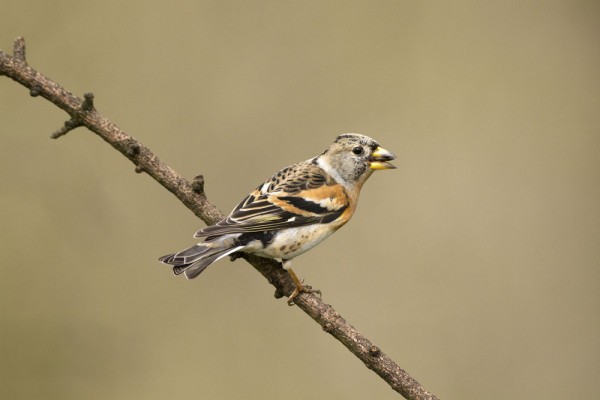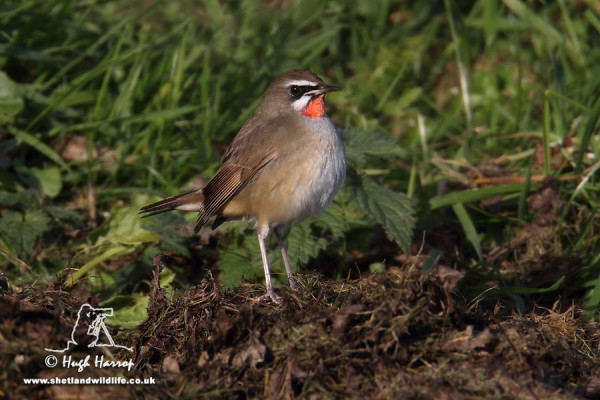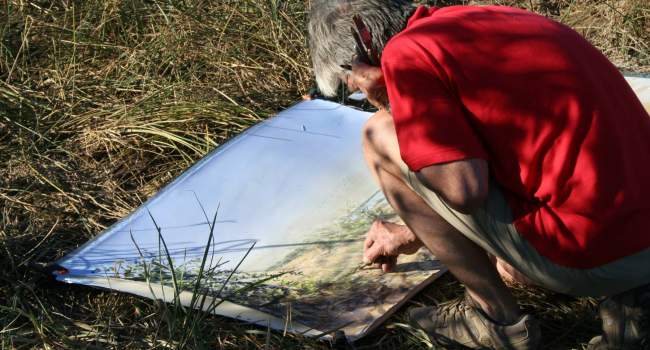
Migration blog (16th – 22nd October)
Wow, what a week that was! Wtith more birds than you could shake the preverbal stick at, it seemed no matter where you were there were migrant birds to be seen, sometimes in truly amazing numbers.
Redwings were by far the stand out species of the last few days. Literally thousands were seen to arrive from Scandinavia, with locations like Trimley Marshes in Suffolk recording 12,000 birds on the morning of the 11th October. This movement was noted further inland with triple figure counts across Cambridgeshire and Bedfordshire the same day. Over the following days, large counts of Redwing were noted at yet more sites and with a swing in wind direction mid-morning on the 13th October yet another wave of Thrushes arrived: a huge count of 23,000 Redwing came through Bempton Cliffs East Yorkshire on the 13th October, with the site also seeing over 4000 Fieldfares. Redwings and Fieldfares weren’t the only thrushes involved with both Blackbirds and Song Thrushes arriving in large numbers, too. It's when events like this happen that you start to appreciate the vast numbers of birds that either arrive here for the winter or use it as a staging post for longer migrations.
Pink-footed, Brent and Barnacle Geese all continued to arrive and family groups of Whooper Swans also started to arrive back at their traditional wintering locations, their trumpeting calls marking their return. Other wildfowl on the move during the last week included Wigeon, Teal, Pintail, Shoveler and diving ducks such as Goldeneye and Pochard, which traditionally arrive a few weeks after the dabbling ducks. With the latter two species, the numbers of birds arriving is very weather-dependent and it is the harsher winters that see the biggest arrivals. We will have to wait to see what this winter brings in terms of numbers of these magnificent diving ducks.
By mid-week, strengthening north-easterly winds and scattered showers provided ideal conditions for large arrivals of several land birds. Ring Ouzel, Goldcrest, Brambling and Starling all poured in along North Sea coasts with the envitable scarcities mixed in. A good scattering of Pallas’ and Yellow-browed Warblers, Little Buntings, and – dare I call this once mega a scarcity – Red-flanked Bluetails were seen, with eight of the latter being found in the last two days alone.
A warm front arrived from the Atlantic on the 6th and was no doubt responsible for the American flavour of rare birds that were found during the week. These included Tennessee Warbler in Co. Galway (a first for Ireland), Philadelphia Vireo Co. Galway (third for Ireland), Blackpoll Warbler in Co. Cork, Black-and-White Warbler, Swainson’s Thrush and Red-eyed Vireo, on the Isles of Scilly, and a Common Nighthawk in Sussex. Birds from the east also arrived, with two Eyebrowed Thrushes and a Rock Thrush on Shetland, the fourth Taiga Flycatcher for Britain in Durham and a Western Orphean Warbler in the Highlands being found.

Species focus - Brambling
Autumn migration is dominated by the weather. Fast-tracking Atlantic storms will always have the promise of a North American bird with them, but some of the biggest spectacles will be seen during easterly airflow across the North Sea. As I write this in my home office in East Anglia, with a window that looks out to the east, I am seeing the fruits of north-easterly winds crossing the North Sea. Flocks of Redwing, Fieldfare and Starling have been a feature and in amongst them have been a few Bramblings.
A handful of pairs have been recorded breeding in Scotland, but the nearest regular breeding grounds are to be found in Scandinavia. Each autumn a varying number of Bramblings cross the North Sea to spend the winter months in Britain, largely dependent on the seed crop on the continent – beechnuts are an important food during the autumn and winter months. In some winters tens of thousands of birds will arrive here and form large feeding flocks in and around our beechwoods. It is too early to tell whether we will have a Brambling winter, but if we do, birds will begin to move into gardens around mid-winter to take advantage of the food we put out, in particular sunflower hearts and black sunflower seeds.
Some of the Bramblings that we are seeing right now may well move through Britain rather quickly, taking a shortcut from Fennoscandia to wintering grounds in France and Iberia.
Easterlies are always welcomed by birdwatchers as they enviably produce a rarity or two and this weekend looks set to provide great conditions for birds to arrive across Britain and Ireland.
Looking ahead
The next couple of days into the weekend look to be dominated by easterlies, at least until late on Saturday when they swing to a more northerly direction. This will bring in colder air until high pressure builds to the south of Britain and Ireland and pulls in much warmer air. Southerly winds form much of the reminder of the review period. Thursday, at the moment, is overcast to bring winds from the west stretching right across the Atlantic to Newfoundland in Canada. What does this mean in terms of what we can expect to see across Britain and Ireland? The continuation of easterlies will no doubt continue to provide a wealth of migratory passerines with thrushes and finches being the main species, so expect to see more Redwing, Fieldfare, Song Thrush, Mistle Thrush and Ring Ouzels arriving over the next couple of days. These will filter inland as we progress through the coming week and can even be heard at night as they migrate overhead. Siskin and Redpoll have already been widely reported this autumn and this will continue, with more Brambling, Chaffinch, Crossbill and Goldfinch joining these mixed flocks. Early morning is a good time of day to see flocks flying overhead. Keep a look out for species such as Hawfinch, which can tag along with their commoner cousins. Easterlies are always welcomed by birdwatchers as they enviably produce a rarity or two and with eight Red-flanked Bluetails already this week, and a record year for them breeding in Finland, it seems likely that more of this once ultra-rare bird will be found. Looking at other potential extreme rarities that could arrive in the next couple of days, Siberian Rubythroat, Rufous-tailed Robin, Eastern-crowned Warbler or Siberian Blue Robin would be greatly welcomed if one was to become twitchable in these difficult times.

As the winds swing to a more northerly direction the conditions become less favourable for big movements of birds, but could still provide species such as Iceland and Glaucous Gull, the first push of Little Auks and perhaps more Bewick’s Swans. This northerly blast is brief and by the beginning of next week a change to warmer temperatures, thanks to high pressure to the south of Britain and Ireland bringing southerly winds, may well see a change in the species on the move. At this time of year this wind direction is much less productive then the springtime, but it could still provide species like Hoopoe, Pallid Swift, Red-rumped Swallow or Black Kite. In all likelihood the southerly winds are going to slow migration down, but if these winds are light enough some birds will still move and birds that arrived prior to this change in wind direction will filter through the country and provide many inland birdwatchers with some very nice migrants.
Westerly winds orginating from Canada are forecast for Thursday, and again, whilst not being conducive of producing good conditions for birds to migrate in they may provide some late interest with an American waif of one sort or another; perhaps a Grey-cheeked Thrush, Rose-breasted Grosbeak, Yellow-billed Cuckoo or another Common Nighthawk.







Share this page